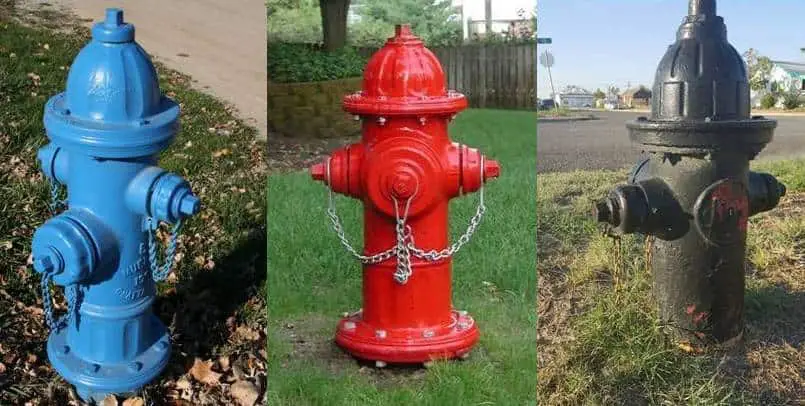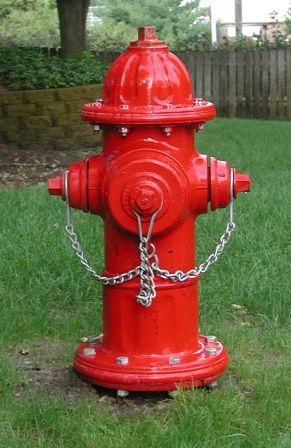Fire hydrants are present in most areas of residential and commercial properties. When you walk in along residential areas, you’re likely to see them close to the walkways. They are usually a significant part of the firefighting network through which water is supplied from a public source to the hose of the firefighters when needed.
But while fire hydrants are a common sighting, the construction and how it works isn’t so common. This article gives you an insight into their construction, and how they work to form a very crucial component in our lives.
What is Fire Hydrant:
A fire hydrant is a connection point for firefighters to tap into a water supply. It is usually found on the side of the street, and the valve has a set of rubber boots to prevent freezing in cold climates. Fire hydrants can be used by any public member in an emergency, such as when your home catches fire or floods, but they are primarily intended for use by firefighters.
Working:
The working principle of a fire hydrant is very simple. Water from the main enters the valve body through a supply line (called a “suction line”). The valve body has two openings; one on top with a check valve that prevents back flow into the supply line and one on the bottom that allows water to flow through an outlet port to the hose bibb (a fitting installed on buildings at street level).
When firefighters pull the lever on their truck’s pump panel or activate the pump’s electrical starter switch, they open up a valve that releases pressurized air into the suction line, which causes water to flow out of the hydrant with great force.
Components of Fire Hydrant System:
Fire hydrants are a common sight in most cities, but they may not be as familiar to you as they are to firefighters. Firefighters use fire hydrants to get water to their trucks, and the water can be used for many different purposes, from putting out fires to washing down buildings or roads.
The main parts of a fire hydrant include:
Fire Fighting Pumps & Accessories:
A pump can be classified into three major types: positive displacement pump and centrifugal pump. Positive displacement pumps can have many applications, such as water supply systems, gas compressor systems, liquid chemical handling systems, and many more.
Centrifugal pumps are commonly used in firefighting to provide high-pressure water flow. They are also used in cooling towers, rooftop units, de-humidifiers, etc.
Piping:
The piping section comprises two main parts: the valve and the body. The valve includes an inlet and outlet pipe, which join together at the hydrant’s top and bottom. The body portion is located between these two pipes, and it is generally larger than both pipes combined because it contains a reservoir for storing water.
Panels:
Fire hydrant panels are made of high-density polyethylene (HDPE) material. They are usually yellow and have an attractive design that makes them easier to spot in an emergency. The primary purpose of this panel is to make it easier for firefighters to find the fire hydrant during an emergency.
The panel can also educate children about the importance of fire safety, especially when playing outdoors or with matches or lighters. It teaches them how to use it properly and what they should do if they see one while playing outside.
Landing Valves:
The landing valve is located above ground level at the top of the hydrant or above street level. It’s called a “landing valve” because it allows firefighters to “land” their hoses onto the hydrant to connect them and start pumping water. The landing valve is typically color-coded for easy identification by firefighters. The color code for landing valves varies between cities and counties, but most are red or yellow. Some cities also use green landing valves with booster pumps that provide extra pressure to help fight fires.
Hoses:
A hose connects the valve on the fire hydrant to the nozzle on the fire truck or other vehicle. It can be attached by hand or with a coupling device that allows it to be pulled off quickly in case it becomes stuck or damaged.
Couplings:
A coupling is like an adapter that connects two pieces. It is often used in plumbing applications and comes in various sizes and materials. You’ll find couplings on every piece of equipment in your home or business (even if you don’t see them). They’re typically made from metal and plastic materials as well as rubber.
Hose Reel:
A hose reel is a device used to store and wind up an unreeled hose for ease of transport. It consists of a wheeled frame with several spools; the hose is wound around these spools as it is unrolled from the reel. A reel can be powered by hand or be motorized, depending on its intended use.
Branch Pipes & Nozzles:
The nozzle is located near ground level on top of the fire hydrant. It has several openings that release water when you turn the handle on top of the nozzle. The handle can be operated by hand or using a wrench to turn it clockwise.
Fire Brigade Connections:
The nozzle is the part of a fire hydrant that connects to a hose. This can be done with a rubber adapter or by screwing the nozzle directly onto the end of the hose. Nozzles come in sizes from 2½ inches to 12 inches in diameter.
A wider diameter will provide more water pressure. Smaller nozzles are easier for smaller hands to use but may not reach as far as larger ones do when attached to longer hoses.
Wiring & Instrumentation:
The wiring and instrumentation of a fire hydrant are essential for proper operation. The wires allow firefighters to know what is going on with their response, including how much water flows through the hose and at what pressure. This information is crucial for getting the right amount of water to where it needs to go to put out a fire quickly and safely.
How to Choose the Right Fire Hydrant system?
Stand Pipes:
A stand pipe system is the most basic type of fire protection. It uses a pipe that runs vertically up and down from the ground to a level just below the roof line. Standpipes are typically painted red to make them easily visible from a distance.
A standpipe has one outlet at the top and one at the bottom. If there is any fire in your home, water will be pumped into this pipe and rise to the roof line before being released through an outlet. This helps prevent damage to your home by putting out fires quickly and preventing water from running inside your walls into other rooms while fighting an external blaze.
Colors:
When choosing the right fire hydrant system, knowing how each color represents a different type of connection is crucial. Here are the standard colors of fire hydrants and their meanings:
Red – This is the most common color and indicates that this is a fire hydrant with a water supply. It also shows a pressurized water supply available at this location. Red hydrants are typically located in front yards and other locations where people congregate, such as parks or playgrounds.
Blue/Green – This color indicates that there’s no pressurized water available. Instead, these hydrants have been installed for use by firefighters in case of an emergency. Blue/green hydrants may be located in industrial areas or private property where there’s not enough space for red hydrants.
Black: Black fire hydrants are sometimes used by firefighters, but they’re also used by utility companies when they need access to water supplies during repair work on lines or pipes underground or under roads.
Conclusion:
Fire hydrants are a vital part of the fire prevention infrastructure in any city. They’re essential for firefighters because they give them access to a reliable water source in places that could otherwise be difficult to access. If you ever wanted to know what makes up a fire hydrant and how it works, this article provides a detailed view into it.



